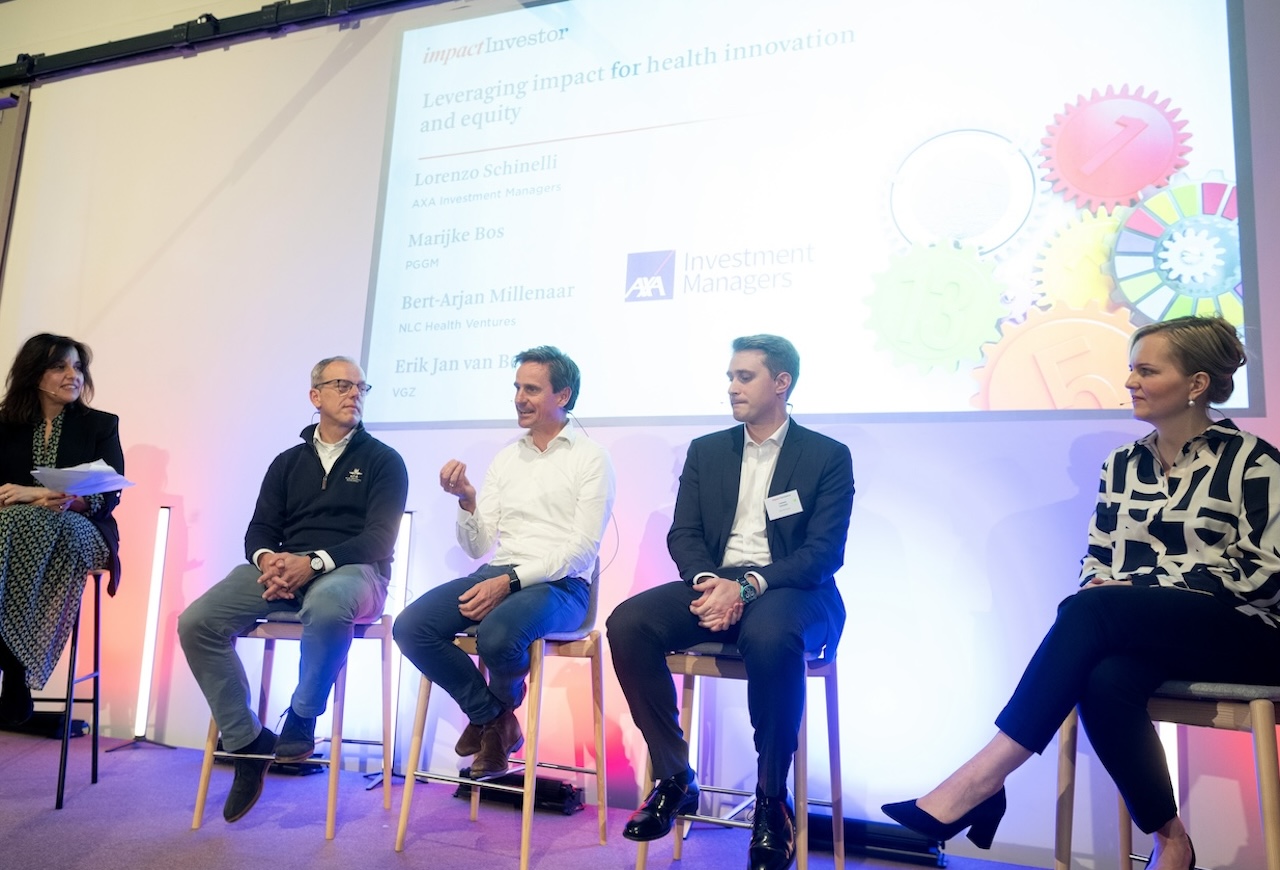Healthcare has become a major focus for impact investors. At this year’s Impact Investor Conference, leading voices in the sector discussed the challenges and opportunities of investing to boost innovation and expand access to healthcare.

At a time when healthcare services around the world are under pressure, the role of impact investment in supporting innovation and equity in the sector has never been more important, according to panellists speaking at last week’s Investor Conference 2024.
It is a sector that sits well within impact investment, with the potential to generate returns alongside social and health benefits. But it is also one with a strong personal attraction for many investors, including those speaking at the event, whose involvement in the sector has been informed by a desire to help following health crises among their family and friends.
Another reminder that, beyond all the number-crunching, successful healthcare investment is about the people it helps was provided by Sarah de Lagarde, global head of corporate affairs at Janus Henderson Investors.
During a fireside chat with Impact Investor’s co-editor Paula Garrido, de Lagarde talked about her experience of rehabilitation after losing an arm and a leg in an accident on the London Underground in 2022, and how AI-powered advanced prosthetics had helped her to walk again and partially replaced some of the functionality of her missing arm.

Additionality
A leading concern of impact investors is that their funding accelerates such healthcare developments, rather than simply replacing funding from elsewhere. This quest for additionality requires a focus on underserved areas of healthcare, and in particular early-stage companies developing the innovations that will drive healthcare in the future.
Bert-Arjan Millenaar, founder and CEO of NLC Health Ventures, an early-stage healthcare investor, told the conference that providing additionality for impact investors meant focusing on early-stage, given the lack of available capital at that end of the market compared to more mature companies, many of which are already proving highly attractive to asset managers.
“The underserved population is the investor, the scientist, the PhD with a brilliant idea, who has to bring his or her innovation to life,” he said.
Across asset classes
Millenaar noted that, while research suggested Europe was an innovation hub, it attracted a relatively small share of global risk capital, in part because big institutional investors did not invest in venture capital or early-stage investors, despite good investment opportunities.
Lorenzo Schinelli, impact and ESG analyst at Axa Investment Managers, said that historically investors had put a lot of emphasis on ESG and operational-practice considerations when looking at healthcare companies, and had just assumed that positive social outcomes would naturally follow.
“We think that this approach is no longer sufficient and does not qualify for a much-needed impact framework around impact investing in healthcare,” he said.
Large listed equity players like Axa IM have a crucial role to play in tackling global health challenges, but to be deemed true impact investors they needed to demonstrate they could balance the dual objectives of innovation and equitable access, and overcome trade-offs between the cost of innovation and affordability, according to Schinelli.
“I think there’s a lot of complementarity between what we can achieve through private and public equity investment,” he said. “If we take a successful early-stage venture that may eventually [go to a] IPO, public markets help to create the optimal environment for that success, and at the same time, they provide flexible investment solutions for investors that are willing to maintain and maximise positive impact generation, maybe investing in public equities while they wait for capital or private equity investments.”
Partnerships
Erik Jan van Bergen, managing director, asset management & treasury, at Dutch health insurer VGZ, said tapping the expertise of the wider VGZ organisation, as well as that of external collaborators had been crucial for his relatively small investment team.
He said the labour-intensive nature of support for early-stage companies required partnerships.
“We decided that it makes a lot of sense for us to look for a partner who already has the experience of being active in pre-seed and seed stages, so we looked in the European markets for credible partners,” he said.
VGZ’s first such partnership has been with NLC, with one or two similar partnerships planned for the future that can leverage VGZ’s knowledge in the healthcare ecosystem.
Measuring impact
Another key issue for impact investors is measuring outcomes, which in the case of healthcare are multi-faceted, according to Marijke Bos, senior investment consultant, healthcare and social welfare at PGGM, which invests on behalf Dutch pension funds of which the largest is PFZW, the scheme for the healthcare sector.
PGGM uses the ‘Quadruple Aim” model widely deployed in the Netherlands and elsewhere to assess the performance and improvement of healthcare delivery. The organisation looks, on one side, at the hard metrics of healthcare outcomes and costs, while also assessing patient and workforce satisfaction.
“The most important one to us, also for investments in new technology, is the healthcare capacity we are creating with those innovations,” she told the conference. In September, PGGM announced it will invest up to €100m in new healthcare technology.
VGZ’s van Bergen said metrics requested from companies needed to be streamlined and standardised to make then workable.
“Together with a number of investors, we are trying to get a standard hub. Because if you go to a small company and you ask them a list of 70 questions, they will be overburdened very rapidly,” he said.
Although metrics reporting needed to be adaptable to take account of the size of the company and its capacity to respond, ensuring a standardised approach through the growth cycle would make investment decisions more efficient for both public and private markets, van Bergen added.
Axa IM’s Schinelli said asset managers could often ascertain outcomes in terms of healthcare improvements through discussions with investee companies over progress in, for example, clinical trials. But reporting on that progress in a meaningful way to clients and investors remains a challenge.
Schinelli said that when it comes to healthcare investments in listed equities, Axa IM focuses more on global systemic challenges, such as overcoming resistance to antibiotics. Another area of interest is investment in the area of neglected and rare diseases. He said that, while these affect a small number of people globslly, they also attract relatively little attention from the markets and offer impact investors a big opportunity to make a significant difference to lives.






